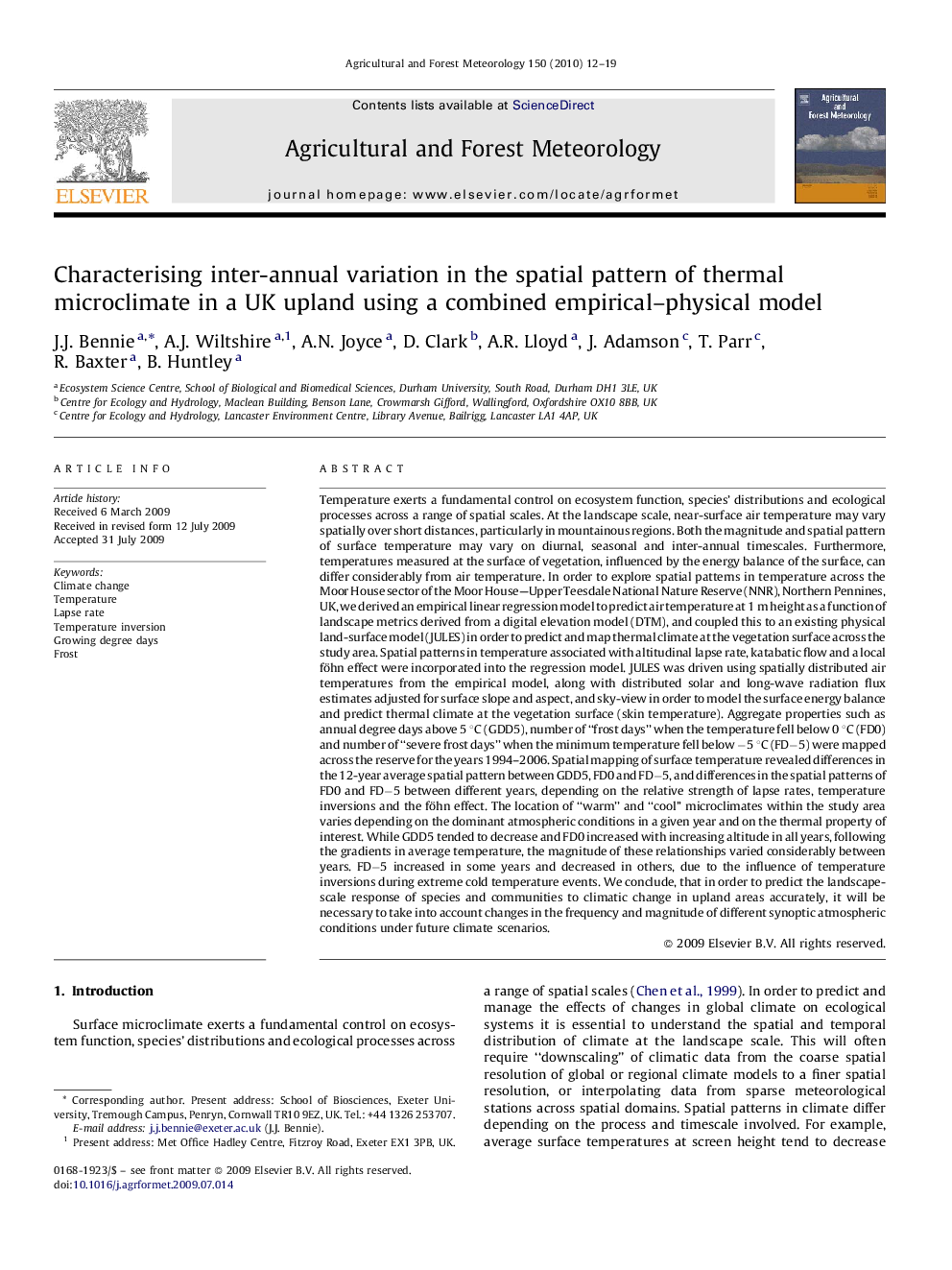| Article ID | Journal | Published Year | Pages | File Type |
|---|---|---|---|---|
| 82554 | Agricultural and Forest Meteorology | 2010 | 8 Pages |
Temperature exerts a fundamental control on ecosystem function, species’ distributions and ecological processes across a range of spatial scales. At the landscape scale, near-surface air temperature may vary spatially over short distances, particularly in mountainous regions. Both the magnitude and spatial pattern of surface temperature may vary on diurnal, seasonal and inter-annual timescales. Furthermore, temperatures measured at the surface of vegetation, influenced by the energy balance of the surface, can differ considerably from air temperature. In order to explore spatial patterns in temperature across the Moor House sector of the Moor House—Upper Teesdale National Nature Reserve (NNR), Northern Pennines, UK, we derived an empirical linear regression model to predict air temperature at 1 m height as a function of landscape metrics derived from a digital elevation model (DTM), and coupled this to an existing physical land-surface model (JULES) in order to predict and map thermal climate at the vegetation surface across the study area. Spatial patterns in temperature associated with altitudinal lapse rate, katabatic flow and a local föhn effect were incorporated into the regression model. JULES was driven using spatially distributed air temperatures from the empirical model, along with distributed solar and long-wave radiation flux estimates adjusted for surface slope and aspect, and sky-view in order to model the surface energy balance and predict thermal climate at the vegetation surface (skin temperature). Aggregate properties such as annual degree days above 5 °C (GDD5), number of “frost days” when the temperature fell below 0 °C (FD0) and number of “severe frost days” when the minimum temperature fell below −5 °C (FD−5) were mapped across the reserve for the years 1994–2006. Spatial mapping of surface temperature revealed differences in the 12-year average spatial pattern between GDD5, FD0 and FD−5, and differences in the spatial patterns of FD0 and FD−5 between different years, depending on the relative strength of lapse rates, temperature inversions and the föhn effect. The location of “warm” and “cool” microclimates within the study area varies depending on the dominant atmospheric conditions in a given year and on the thermal property of interest. While GDD5 tended to decrease and FD0 increased with increasing altitude in all years, following the gradients in average temperature, the magnitude of these relationships varied considerably between years. FD−5 increased in some years and decreased in others, due to the influence of temperature inversions during extreme cold temperature events. We conclude, that in order to predict the landscape-scale response of species and communities to climatic change in upland areas accurately, it will be necessary to take into account changes in the frequency and magnitude of different synoptic atmospheric conditions under future climate scenarios.
